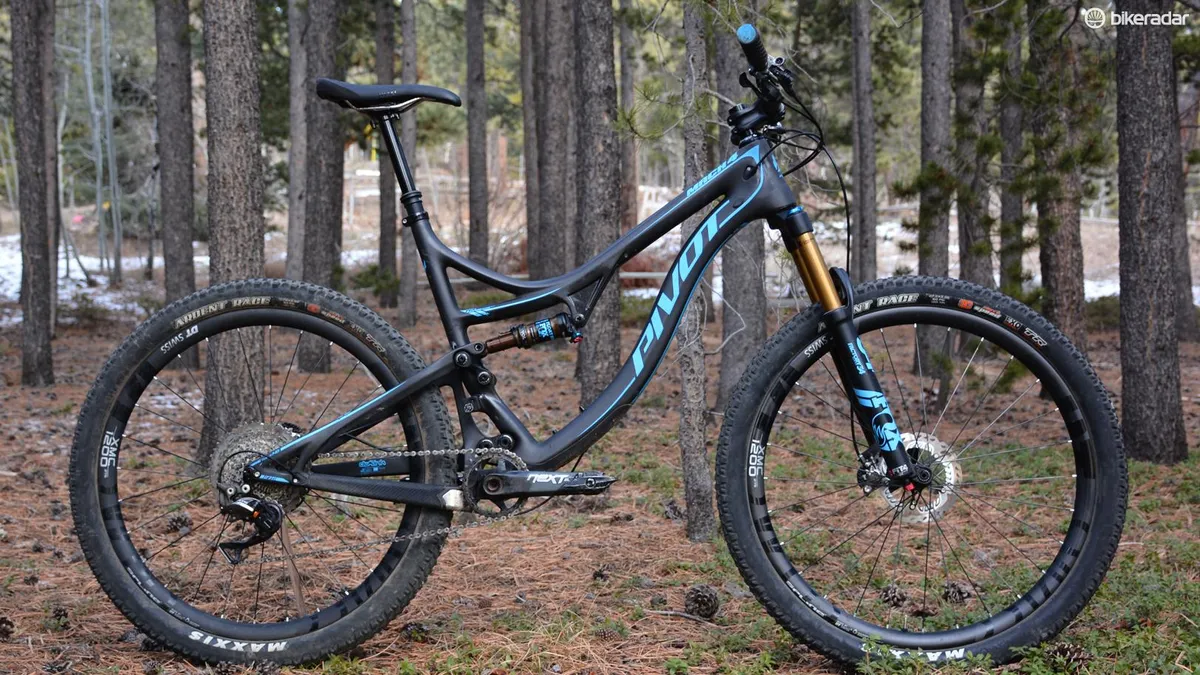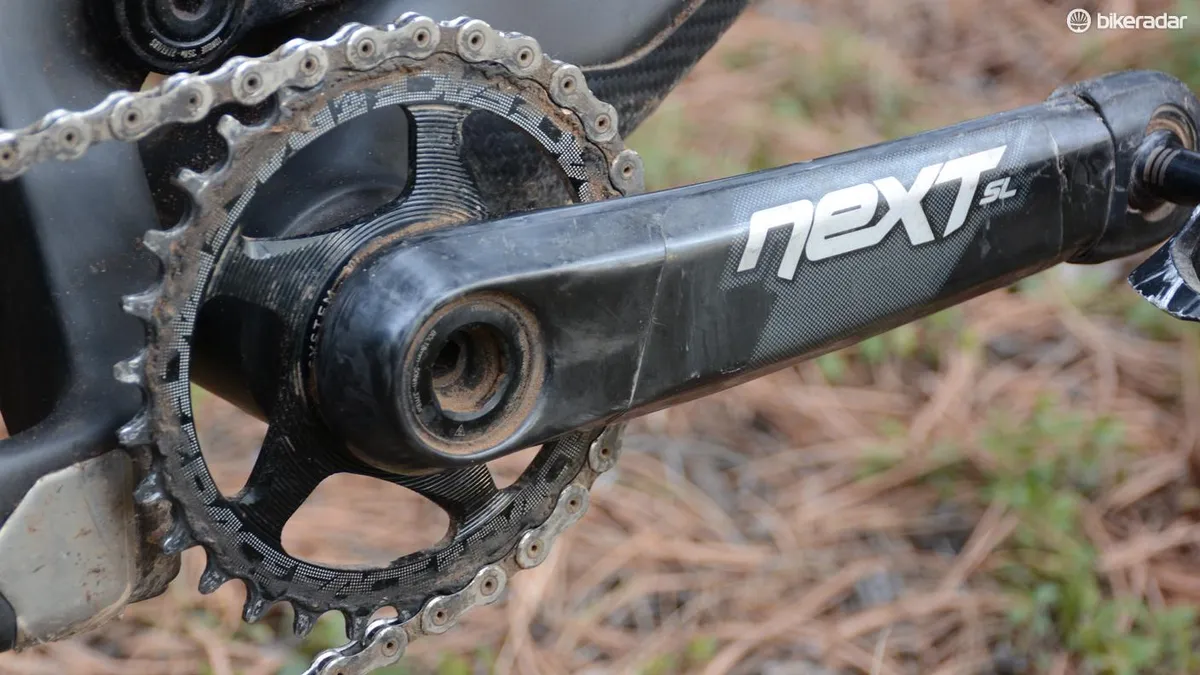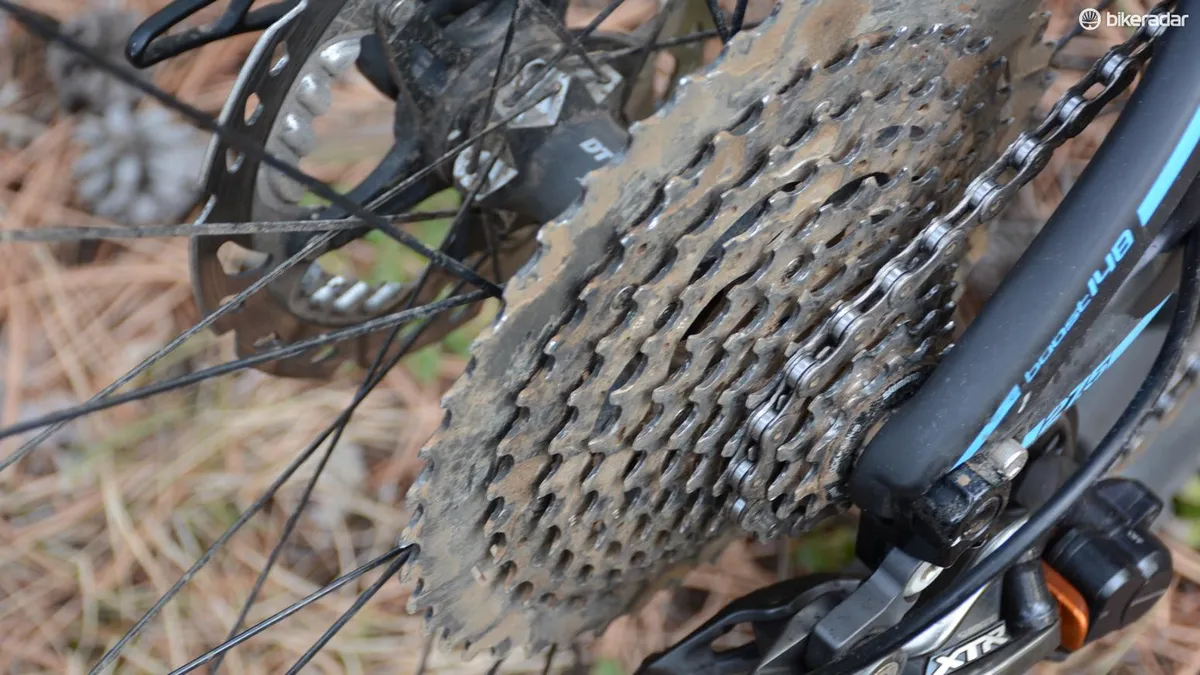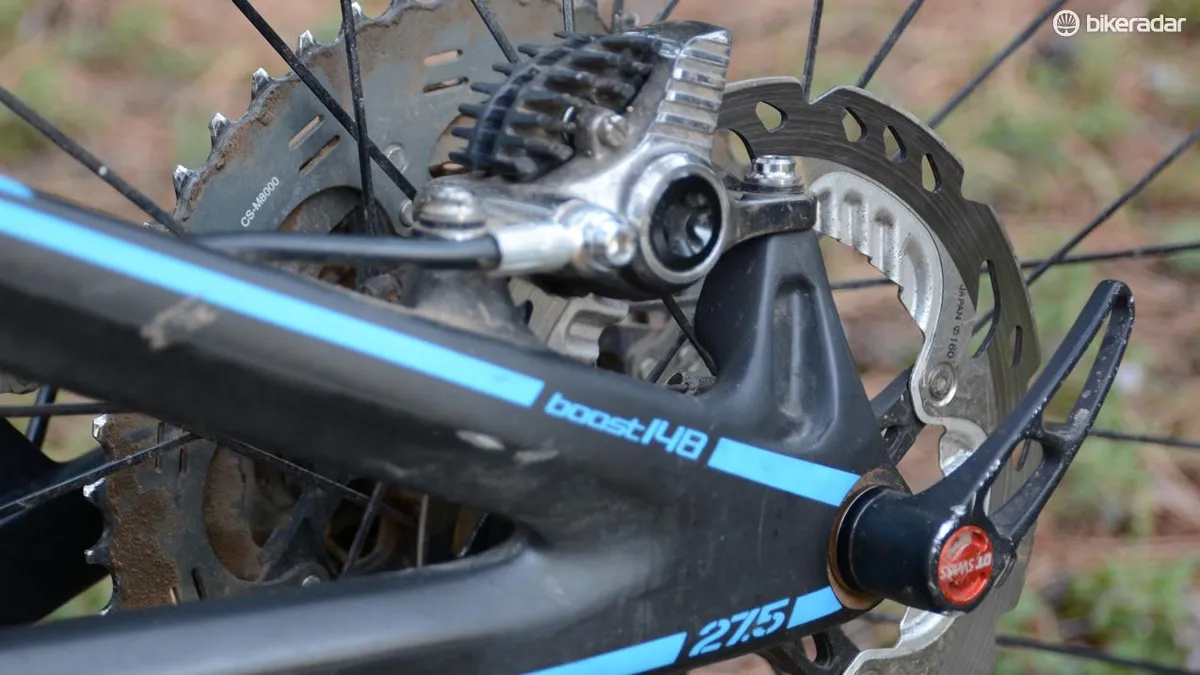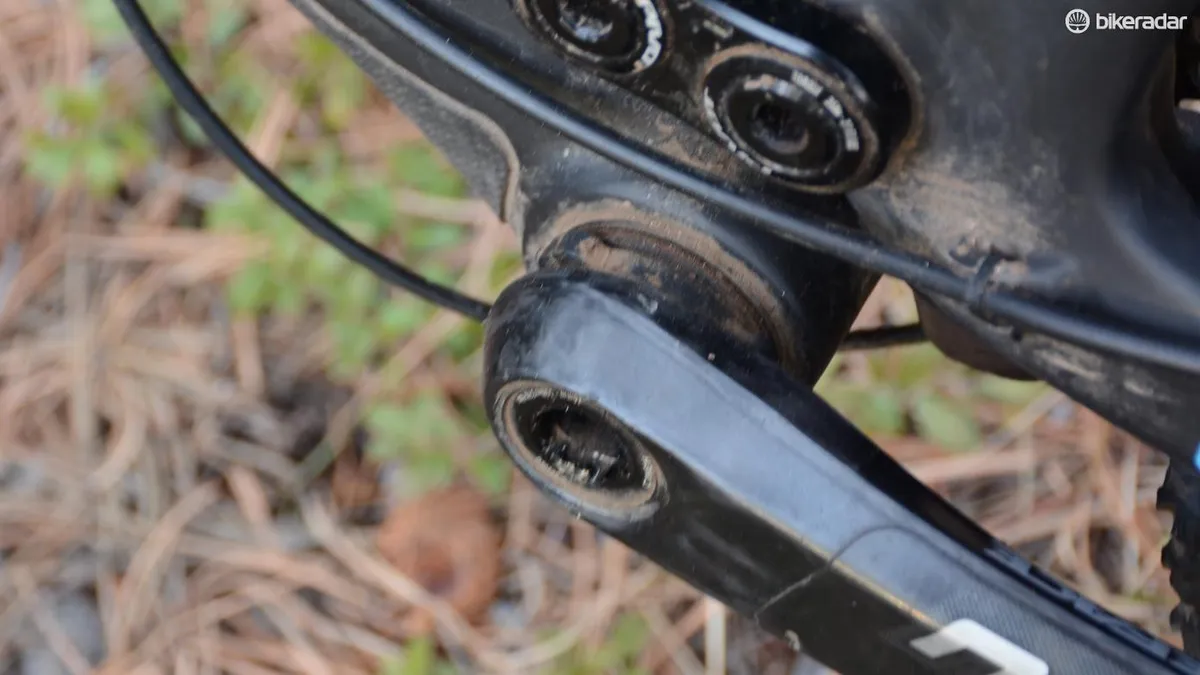Look around any cross-country start line and one wheel size dominates — 29ers. Here's where Pivot veers off course with its fifth-generation Mach 4. It's rolling on 27.5-inch tires and it's billed as an incredibly versatile bike that can handle most types of riding, from XC races to pedal-heavy enduro days.
- Rocky Mountain Element 999 RSL T.O. review
- Cannondale's Scalpel Si Carbon 2 at the Titan Tropic Cuba
- Pivot Mach 5.5 Carbon first ride review
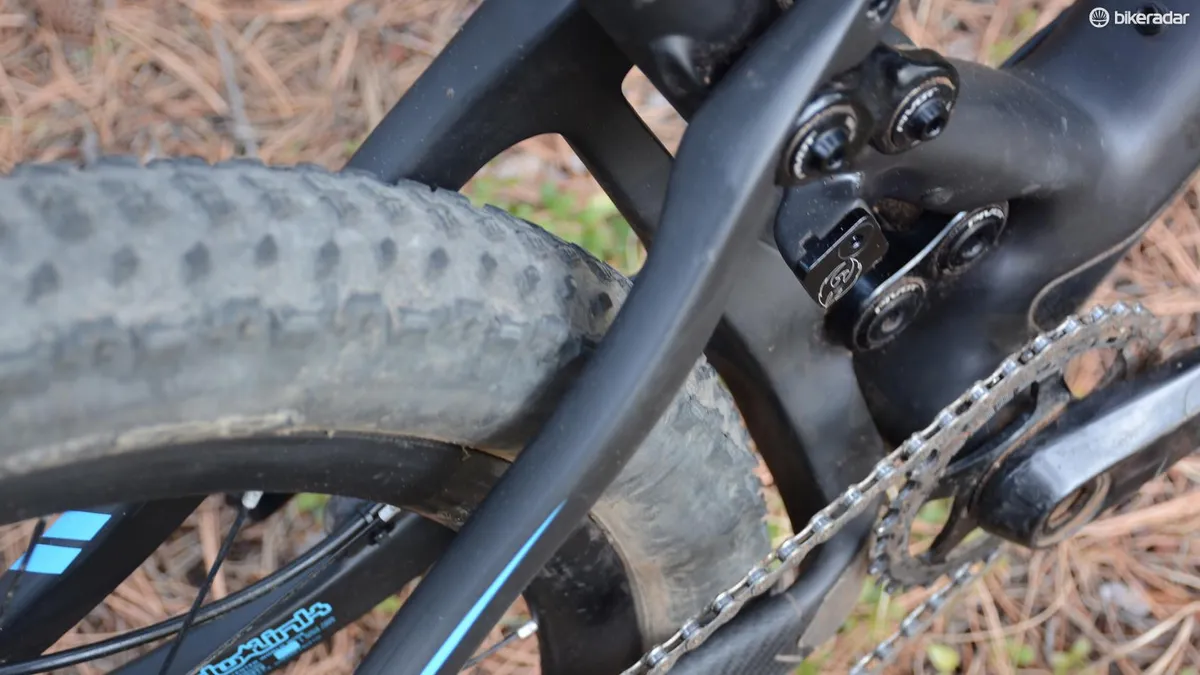
Pivot Mach 4 highlights
- Full carbon frame
- 115mm travel DW-link suspension with race and trail tuning (XS size has 100mm travel)
- 27.5in wheels
- Fits tires up to 2.6in tires
- Available in either trail-oriented or XC racing-focused complete bike builds
- XS, S, M & L (long) sizing, with X-Small featuring super low stand-over clearance
- Actual weight: 11.46kg / 25.26lbs (Large, Long size)
A fit for everyone, even the vertically challenged
Pivot has always delivered bikes with exceptional low standover height and the new Mach 4 follows that pattern — the X-Small frame size has a suggested size range of 4'10" to 5'5", so even the shortest riders will be able to ge a proper fit.

Each frame size has a dedicated carbon layup to equalize the strength and stiffness throughout the size range. Additionally, the smaller frames are sprung with shocks featuring a lighter shock tune and revised leverage ratios.
Pivot caters to both the cross-country race crowd, as well as trail riders who believe that speed is the main ingredient for fun in the woods.
XC race builds are fronted by a Fox 32 Step Cast fork with 100mm travel. A carbon flat bar partners with the shorter travel fork to keep the front end low and light, thin Maxxis' Ikon 2.2in tires are fitted.
On the trail build, a larger stanchion Fox 34 guides the way with 130mm of travel. The 34 fork also has clearance for 2.6-inch tires (the 32 has 2.3-inch tire clearance). More control comes courtesy of the Maxxis Ardent 2.35-inch tires and a riser bar paired with a shorter stem.
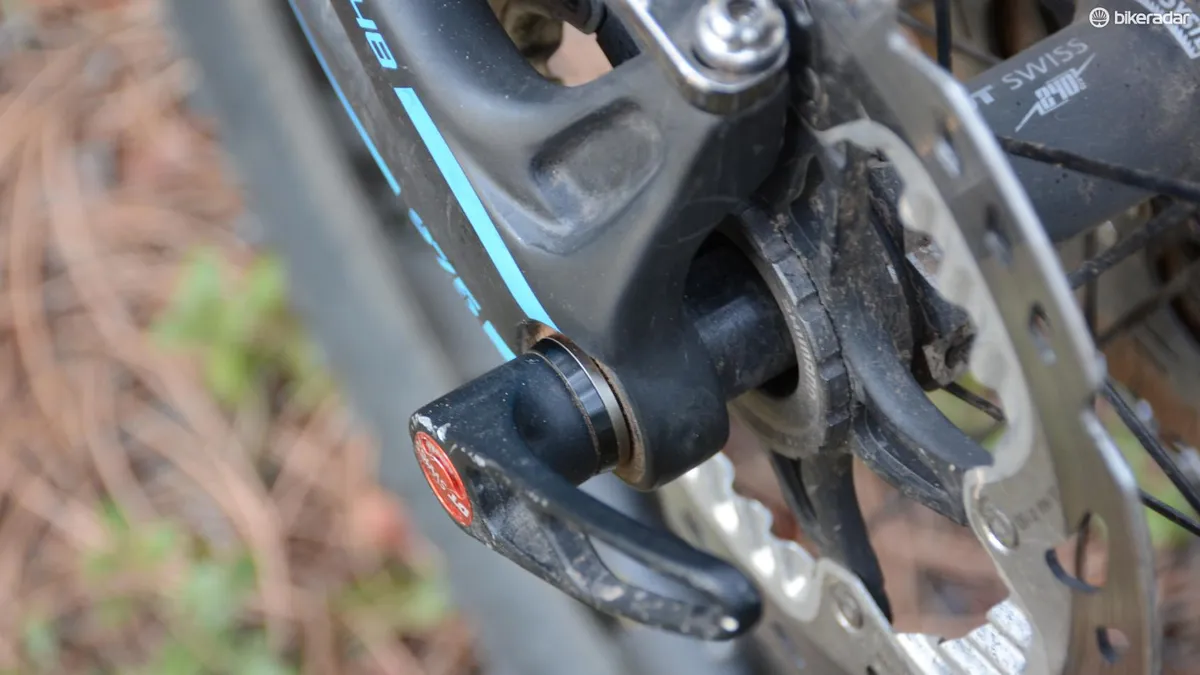
The geometry doesn't present anything particularly unusual — on the trail build, the 67–68-degree head angle is useable, albeit a bit steep. The 72 degree seat angle is a bit relaxed, and the 428mm chainstays are short, but not mind-bendingly so.
Stack and reach numbers are both on the low side. Again, that harks back to the Mach 4's XC heritage, where going uphill fast and recovering on the downhill is still considered having fun.
Loaded with amazing specs
The Mach 4 I had in on test was loaded with all of the good stuff and the $7,799 reflects that. The Fox Factory level suspension offered impressive control, easy adjustability, and plenty of support.
Shimano's XTR 11-speed handled the shifty stuff. I'd forgot about how much I like Shimano shifting — SRAM has been absolutely crushing the OEM spec on mountain bikes, so it was refreshing to click through the light, silky, yet dialled Shimano throws.
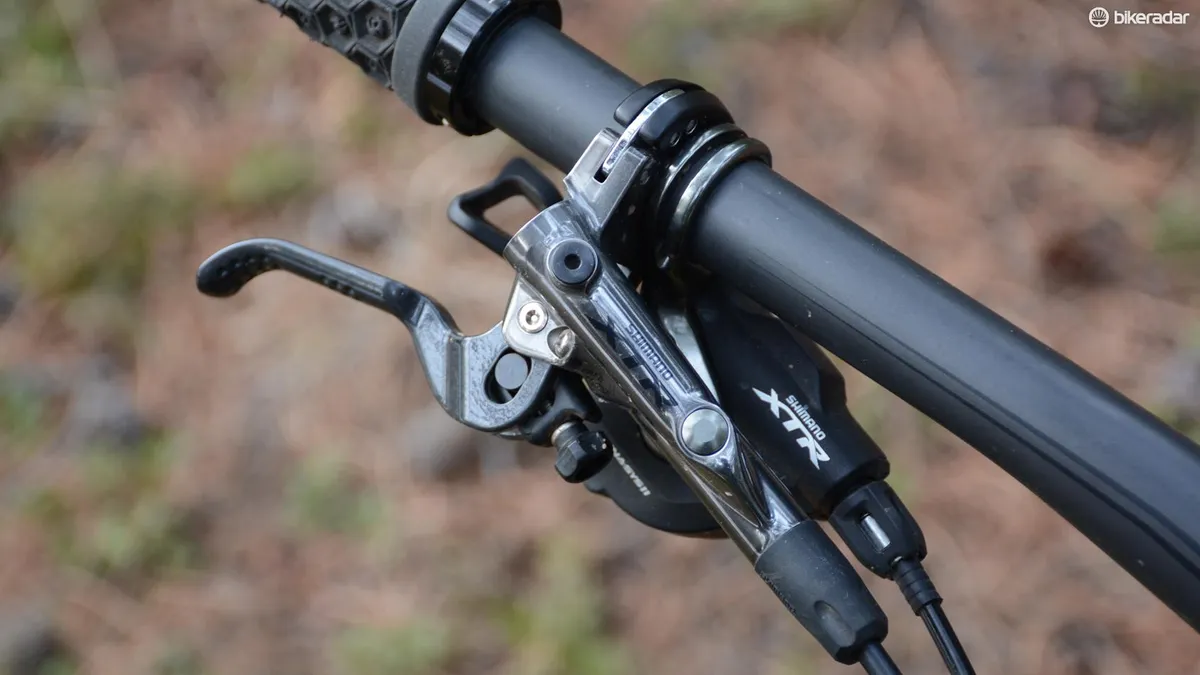
The XTR Trail discs impressed as well. Shimano's notorious wandering bite point reared its ugly head occasionally, but only really on long descents. Outside of that, the stubby carbon blades and easy to amp up power delivery made the brakes a highlight of the build.
The 27.5-inch DT Swiss XMC 1200 carbon wheels presented no issues. Despite being insanely light (1,451g), and carrying a 120kg (264lb) rider weight limit, they rolled wobble-free throughout the test. They were also surprisingly stiff underneath as well. In really rough terrain, I could feel them straining and squirming, but that was only on the outer limits.
I had mixed feelings on the stock Maxxis Ardent Race 27.5 x 2.35-inch tires — I understand the thinking behind the low weight, low tread spec, but kept wanting for more bite to really let the Mach 4 get wild.
I swapped out the front tire for a much burlier Kenda. If trail riding holds more weight for you, a bigger, more aggressive tire is warranted.
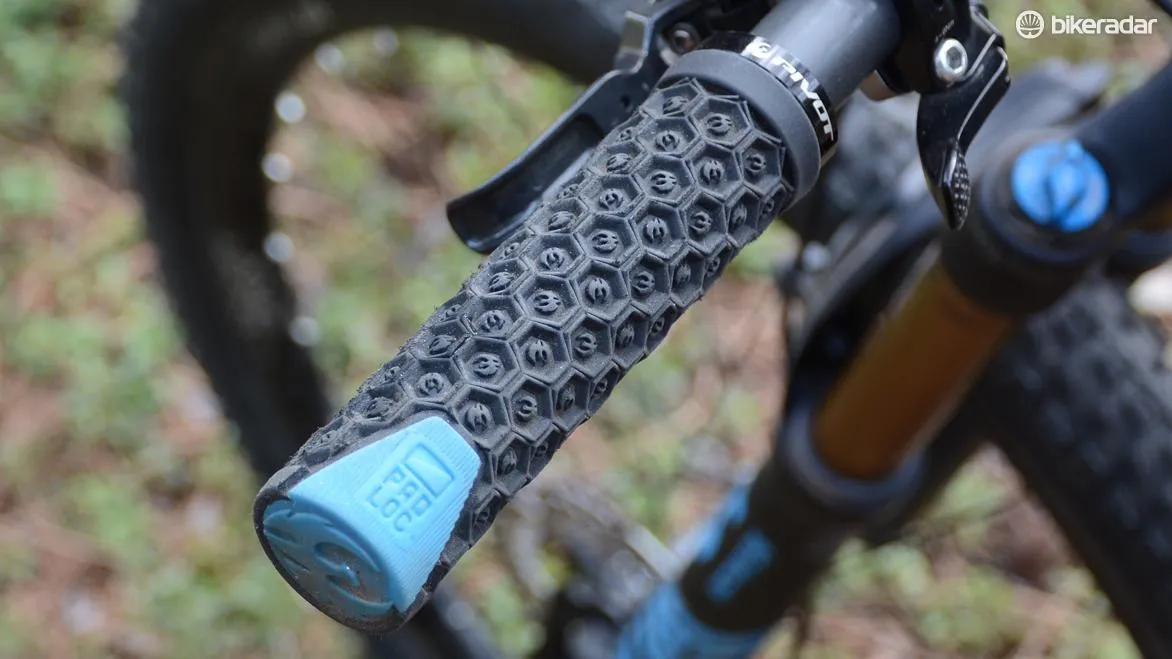
I also had a bit of a grip revelation on the short-travel Pivot — initially, I scoffed at WTB's Padloc grips as a solution looking for a problem. That was until I rode them.
The real benefit isn't the lack of spin, it's the softness at the end of the bar — the extra rubber here was heaven-sent, especially since the carbon bar is built around an ultra-stiff 35mm clamp.
Why 27.5-inch wheels?
With 115mm of rear travel and a decidedly XC focus, why did Pivot pick the smaller of the two hoops?
President of Pivot Cycles, Chris Cocalis, had this to say; "for smaller riders, and for those looking for a more nimble bike, the Mach 4 really fills a perfect niche. It's been raced in everything from more technical endurance races to enduro events that require more pedaling. The bike is extremely versatile."
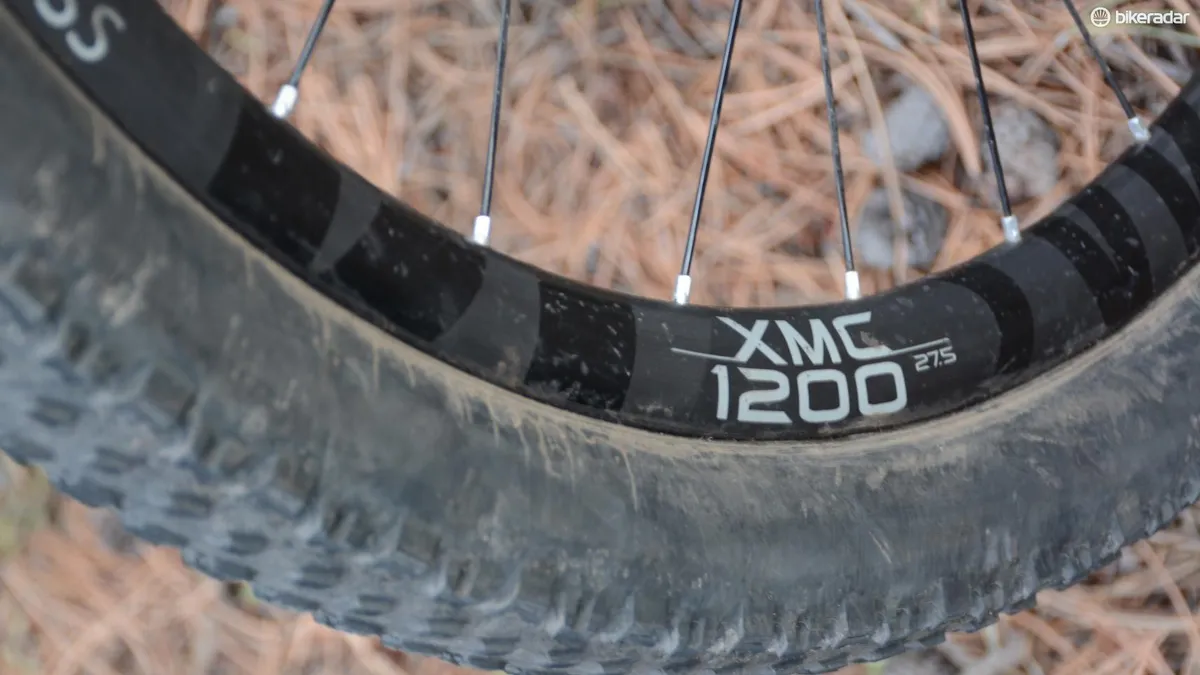
Cocalis added that "if you have to have only one bike and you are doing everything from 24-hour racing (even at the highest competitive levels) to pretty aggressive hard core trails, the Mach 4 handles both ends of the spectrum incredibly well, and overall it’s just an incredibly fun bike."
In fact, Cocalis's personal bikes include a Mach 4 and a long-travel Pivot for bike park and extremely technical days.
p.p1 {margin: 0.0px 0.0px 0.0px 0.0px; font: 16.0px Calibri} p.p1 {margin: 0.0px 0.0px 0.0px 0.0px; font: 13.0px Tahoma} p.p1 {margin: 0.0px 0.0px 0.0px 0.0px; font: 13.0px Tahoma}
Maybe slower, definitely more fun
It's hardly worth arguing as test after test has shown that bigger wheels are faster. There's even less debate when it comes to XC riding. But when speed isn't everything, that's where smaller wheels shine.
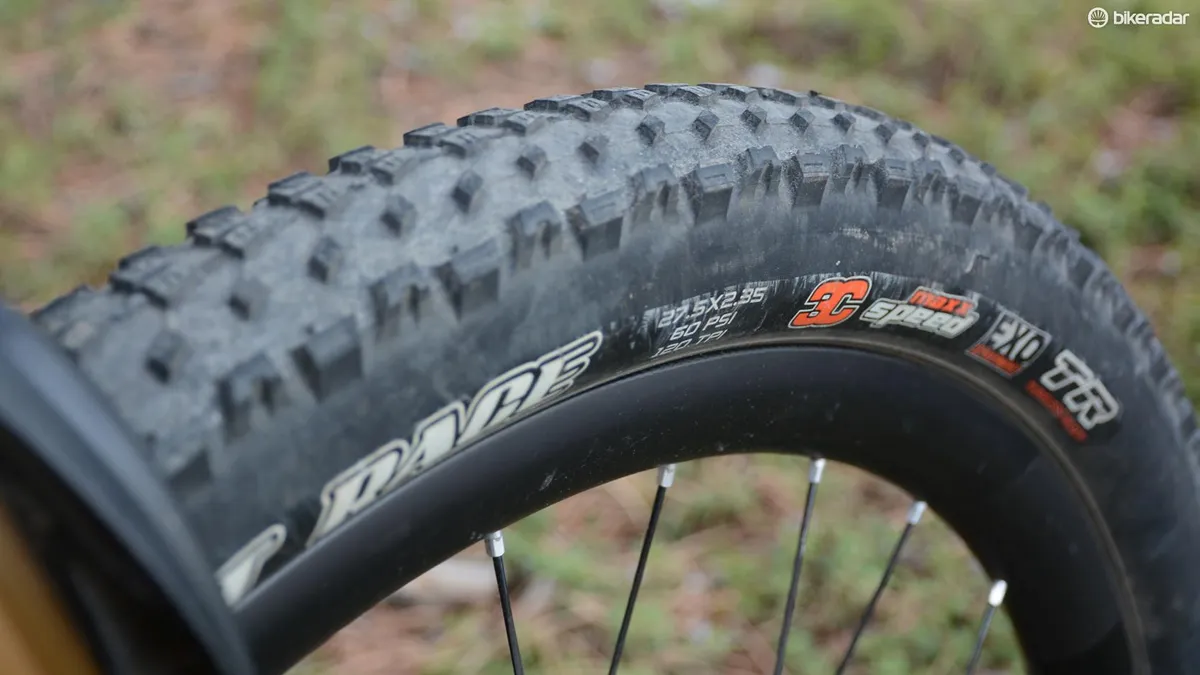
For comparison's sake, I compared the Mach 4 to a 100/120mm travel, 29er Kona Hei Hei Supreme. On less technical trails, both bikes were so close at times that I'd call it draw. While the bigger wheel Hei Hei Supreme would skim over any rocks, the Mach 4 was able to dance around and launch over rough terrain with ease.
On more rocky and technical trails, the 29er had the advantage on the clock, but it was glaringly obvious that the 27.5-inch bike made me want to gap obstacles, and just generally spend more time in the air. But as any pure-bred racer will tell you, air time is a lot slower than ground time.
Amazing frame and suspension make for an incredible ride
Removing wheel size from the equation, the frame and rear suspension of the Mach 4 were some of the best I've ridden.
Making the most out of short travel is plausibly more difficult than maximizing longer travel. There's simply less to work with, but that doesn't deter Pivot and the Mach 4's 115mm rear wheel travel was impeccable.
I let my former Cat 1 roadie co-worker Ben Delaney ride the Mach 4 for a while and he came away impressed, saying "it's remarkable how much power goes to the rear wheel."
I lent the bike to a few friends who were dumbfounded by how it could be so responsive, yet suck up bumps so well.

In making the rear suspension work the way it wants, Pivot bossman Cocalis said that "right from the beginning, we work with Dave's (Weagle) starting shock stroke, leverage ratio and all the critical parameters of the suspension design. This drives us in a general direction for suspension tuning. We work internally with Fox on the suspension tuning."
And it showed — on the trail, the Mach 4 had that almost unholy balance of blinding get up and go fused with hit absorption that punched way above its meager 115mm of travel.
The level of control was notable in how easy it was to ride at speed, and how quickly and calmly it changed direction and velocity.
It was simply astonishing how fast I could come into corners, waiting until way past my normal braking points to grab the XTR Trail disc levers.
Ripping again on the pedals, the Mach 4 pulled like a turbocharged car at full boost. Trees blurred, the whoosh of air got louder, and before I knew it I was at the end of the cassette. Riding the Mach 4 is like that — it's fast in more places than a lot of other bikes.
Pivot Mach 4 Carbon 27.5 XTR bottom line
Typically, bikes that fall into the do-it-all niche have a bit more travel, somewhere in the 140mmm range. Even though the Mach 4 comes up shy, it still feels like it can be hustled into some nasty stuff without too much restraint. On the less techy bits of trail it feels like a slingshot, gaining speed in ways that don't seem legal.
If you're an XC rider at heart, have a few events or races upcoming yet constantly find yourself seeking out rougher, nastier trails, or simply want more control while riding, the Mach 4 Carbon is hard to beat.
p.p1 {margin: 0.0px 0.0px 0.0px 0.0px; font: 13.0px Tahoma}

